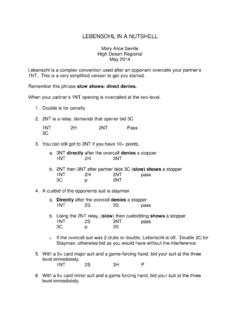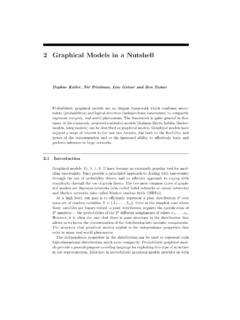Transcription of Kathleen Irwin’s DOSAGE IN A NUTSHELL - Team Valor
1 Kathleen irwin s DOSAGE IN A NUTSHELL The DOSAGE System was developed to help early thoroughbred breeders identify stallions which imparted varying degrees of speed or stamina to their offspring. Wikipedia has this to say about the methodology s history: Interest in determining which sires of race horses transmit raw speed, and which sires transmit stamina (defined as the ability to successfully compete at longer distances) to their progeny dates back to the early 20th century, when a French researcher, Lt. Col. J. J. Vullier, published a study on the subject (called DOSAGE ), which was subsequently modified by an Italian breeding expert, Dr. Franco Varola, in two books he authored, entitled Typology Of The Race Horse and The Functional Development Of The Thoroughbred.
2 However, these observations attracted little interest from the general public until 1981, when Daily Racing Form breeding columnist Leon Rasmussen published a new version of DOSAGE developed by an American scientist and horse owner, Steven A. Roman, , in his analysis of the upcoming Kentucky Derby for that year. The new approach, which was more accessible to owners, breeders and handicappers and was supported by solid statistical data, rapidly caught on, and the term " DOSAGE Index" has been a fixture in the lexicon of horse racing ever since. The details of DOSAGE methodology have been summarized in Dr. Roman's book entitled DOSAGE : Pedigree & Performance published in 2002. In more recent times the system has been forced into its now more famous role of handicapping the Kentucky Derby.
3 DOSAGE attempts to turn the horse s pedigree into numbers. Few people can look at a collection of horse names and see the strengths and weaknesses they represent, but anyone can look at numbers and see relative value. For that reason, handicappers latched onto it and tried to tweak it into a gambling system. The problem here is - breeding a racehorse is a combination of science and art, and while the science portion can be quantified, the art portion never can. What Is DOSAGE ? DOSAGE is a mathematical analysis of the strengths in a thoroughbred pedigree based upon the location of certain outstanding sires in its family. Who Are The Important Sires? There are too many to list here; more than 200 at this time have been recognized as Chefs-de-Race (Masters of the Breed).
4 In general, they are the stallions which have had a remarkable influence on the breed over the last century; the names which remain like Round Table, Princequillo (right), Northern Dancer, etc. when other stallions of short-lived popularity have disappeared. The Blood-Horse s Chef-de-Race list Depending on the generation in which it appears, the stallion contributes a certain number of points to the subject horse. Round Table in the 3rd generation, for instance, contributes more points than Round Table in the 4th generation. Specifically - Chef-de-Race stallions contribute the following points, based upon the generation in which they appear: 1st generation .. 16 points 2nd generation .. 8 points 3rd generation.
5 4 points 4th generation .. 2 points This follows the assumption that the influence becomes less and less evident with each passing generation. Remember - the sire MUST be listed on the Chef-de-Race list in order to contribute DOSAGE points to the foal. What Type of Influence? Chef-de-Race stallions have been assigned to one or more of these five categories: These categories represent the spectrum of speed (Brilliant) to stamina (Professional). Just as a prism separates light into definite visible bands, DOSAGE separates a horse's inherited aptitudes into definite visible categories. A Brilliant chef is one who has been identified as one who tends to produce runners who excel at extremely short distances.
6 His appearance in the pedigree will improve the runner's Brilliant score. A Professional chef tends to produce runners who excel at extremely long distances. Classic chefs tend to produce good "classic" distance runners and so on. Some stallions have been named a Chef in more than one category, like Mr. Prospector who is a "Brilliant/Classic" Chef. If he appears in the foal's pedigree, his allowable points will be split between those two categories. For instance, if he appears in the 2nd generation in the pedigree, he is worth 8 points to the profile. 4 points are added to the profile's Brilliant score, and 4 points are added to the Classic score. What Is The DOSAGE Profile? The DOSAGE profile is a series of 5 numbers which show the reader exactly how many points this horse has inherited from sires in each category.
7 For instance, look at Squirtle Squirt s profile above. See how the largest number (10) appears in the Brilliant category? Note also how the entire profile slants toward the speed end of the spectrum. This is the profile of a sprinter. The horse's race record bears that out. His victories came from between 4 furlongs and 7 furlongs, including triumphs in the Breeders Cup Sprint and King s Bishop Stakes. Now compare the profile of Spring Marathon. Quite different, isn't it? This profile slants to the right, indicating a propensity for stamina. Note how the largest of the figures appears in the Professional category. This horse raced in England, and even if you ve never heard of him, you could probably guess what type of event in which he excelled.
8 If you said "something really, really long" you're right. Befitting his name, he placed in flat races at 11 and 14 furlongs, then found the winner s circle when tried over jumps going 2 to 3 miles. The DOSAGE profile clearly points to distance capabilities for this horse. How Is the Profile Calculated? Some of you have asked via email for a step-by-step crash-course in profile calculation. I've already hinted that the profile points come from the sires and their location in the pedigree - but for the specifics, please go to the Profile Calculation page. What Is The DOSAGE Index? The DOSAGE index (DI) is simply the ratio of speed points to stamina points. Everything to the left of middle is speed.
9 Everything to the right of middle is stamina. The Classic category (in the middle) is divided equally between speed and stamina. For Squirtle Squirt, 10 + 8 + 3 are his speed points. That makes 21 speed points. On the right side we have 3 + 0 + 0, for a total of 3 stamina points. Divide speed by stamina. 21 divided by 3 equals 7. This means the horse has 7 times as much speed as stamina. For Spring Marathon, the index is , indicating that he has only two-thirds as much speed as stamina. Just for your information - more stamina than speed often flags a good turf performer. DOSAGE & The Derby You may have heard that any horse whose DI is greater than cannot win the Kentucky Derby. This figure was selected because up until 1991, no horse with a higher DI had ever won the race.
10 (In that year, Strike the Gold won with a DI of only because his sire Alydar was yet to be named to the Chef-de-Race list in the Classic category. After that designation, the DI for Strike the Gold fell to the more realistic figure of which more accurately reflected his abilities and those of most offspring of Alydar.) Real Quiet won in 1998 with a DI over the limit, and subsequent Chef-de-Race additions have actually raised his DI even further. Such is the nature of statistics - it won't be accurate 100% of the time. The barrier is still a good historical yardstick for a classic distance race, but is bound to be broken again someday - only because horses don't race against distances, they race against other horses.







